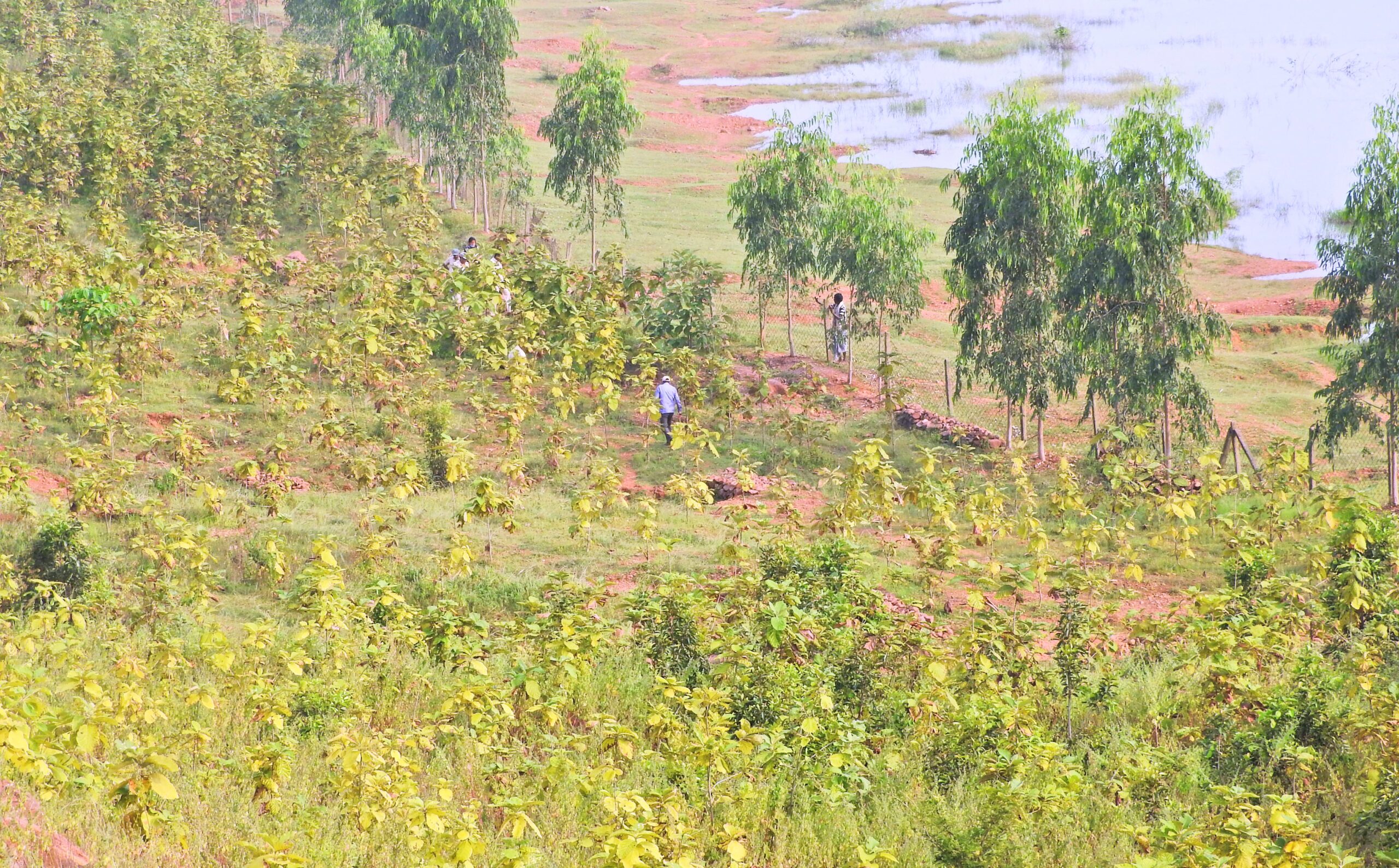With the convergence of MNREGA and forest department, 25 thousand saplings have been planted on the mountain of Masania
Arrangement of food and water on the mountain for the bears, thinking of villagers end the human-bear conflict
Raipur. 23 November 2020. To see how the MNREGA (Mahatma Gandhi National Rural Employment Guarantee Scheme) is playing an important role in saving natural resources, ecosystems and water, forests and land, it is pleasurable to watch bears playing among the trees grown on the Mount of Manasia. The scene should be interviewed. With the convergence of the schemes of the MNREGA and the Forest Department, not only the mountain has been covered with trees, but many check dams have also been made for water conservation. The unique example of strengthening the co-existence of human and wildlife with human efforts is the work done by the MNREGA and the Forest Department in the mountains of Masania and its surroundings.
Until a few years ago, there was no trace of greenery on the Masania mountain adjacent to the village of Masniakala and Masniakhurd of Sakti development block in Janjgir-Champa district. Desperate from trees and plants, there was lack of food and drink on this hill, then bears and other wildlife came to the village. As a result, bears and villagers started to come face to face again and again, sometimes the bears were injured. Due to hunger, bears also started harming crops. Due to this, fear began to prevail among the villagers and they started looking for a way to get rid of this problem.
The villagers discussed among themselves and planned to preserve the bears in the mountain and forest. It was considered to plant saplings in the Masniakala Gram Panchayat and the dependent village of Masniakhurd so that the bears get food in the forest itself and do not come towards the village. For this, with the convergence of schemes of MNREGA and Forest Department, the way of planting trees on the mountain was taken out. In the year 2017-18, the plan for the next five years was prepared and implemented. Mixed plants were planted on about 25 acres of land, which included 25 thousand saplings of teak, doom, khamhar, berries, mangoes, bamboo, shishu, arjuna, casiacemia and plum.
After sanctioning 29 lakh 38 thousand rupees from MNREGA for this work, the workers started their work to plant saplings on the inaccessible Masaniya hill. This work was difficult because he could not stay alive for a long time due to lack of water after planting. With the convergence of MNREGA and forest department, about one million rupees have been sanctioned for ground water conservation. With this amount, the Brushwood Checkdem, Gadkar Checkdem, Boulder Checkdeck and Contour Trench were built. Workers kept the plants safe by continuously watering and fencing the plants.
With good care, the plants began to sway like trees in two years. There a total of 25 thousand saplings were planted, including 8015 teak plants, 2975 doomers, 1815 khamars, 2445 berries, 2075 mangoes, 1425 bamboo ones, 1245 seshu, 1275 arjuna, three thousand casiacemia and 730 berries. . The laborers irrigated these plants through Kanwar and diesel pumps. Fencing was done 716 meters from cement pole channellink for plant protection. In this five-year action plan, a total of 7851 man-days of direct employment have been created so far in plantation in the first year and plantation and protection work in the subsequent three years. For this, the workers have been paid wages of about 14 lakh rupees. There the Brushwood Checkdem, Gadkar Checkdem, built from the MNREGA convergence. Boulder checkdeck and contour trenches gave good growth to the plants as they got plenty of water. Now trees from 10 to 12 feet have started appearing there. With the protection of ground water, now the bears are getting water on the hill itself.
Bear habitat and pasture development from Jamwant project
48 lakhs were sanctioned in the last financial year to develop the area under Jamwant project from State Campa head. With this amount, ponds and dabris have been built for the development of water resources there. 13 thousand 200 saplings have been planted for bear habitat and pasture development. These include ber, berries, chota karonda, vine, sycamore, banyan, peepal, satavar, kevakand, wild turmeric and sweet potato plant. Termites are very dear to bears. Hence termite siphintag (useful for bears) has also been established in the area. Smt. Premlata Yadav, Forest Officer, says that the balance of nature is maintained only by saving water, forest and land. In the direction of MNREGA and Forest Department, important work has been done in this direction in Masania Hills. Wildlife especially bears feel safe by planting trees and water on the mountain.
Coexistence rather than human-bear duality
The sarpanch of Masniakala, Mr. Sanjay Kumar Patel, states that the color of this area has changed since the planting. With the joint work of the MNREGA and the forest department, the conflict between humans and bears has now ended and they are living together without harming each other with the feeling of co-existence. Fruit and shady trees have not only covered the mountain with a sheet of greenery, but also provided protection to the bears. A bear friend team has been formed in the village so that the bears are not harmed by anyone. Smt. Bhagwati Patel, a member of this party, tells that bears are coming and going in the village, but there is no problem. Bears are often seen near trees under the mountain of Masania.




